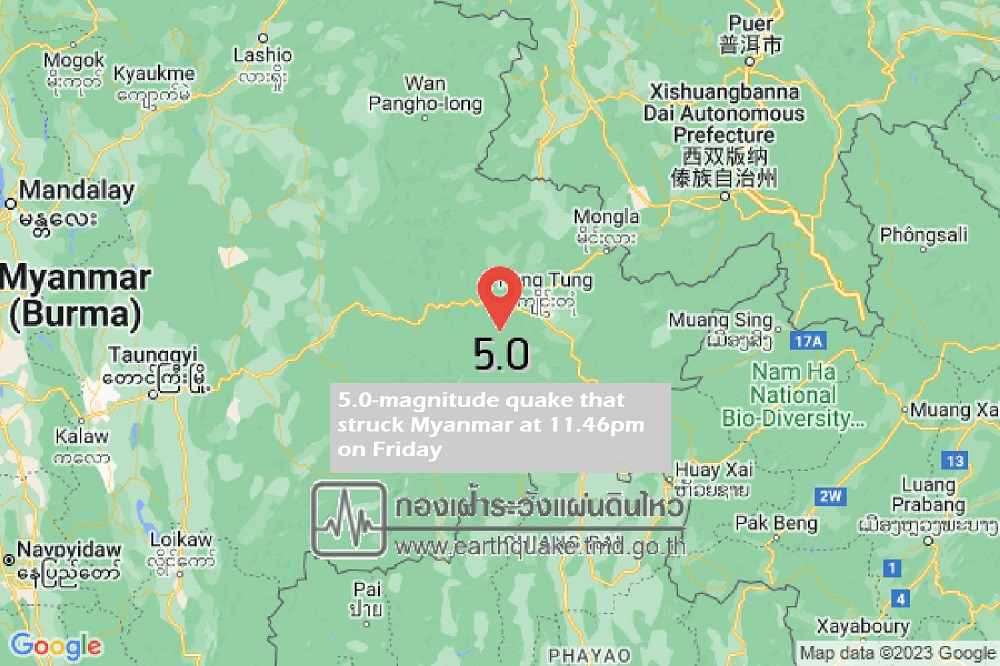The Meteorological Department, a 5.0 magnitude earthquake rocked Myanmar late Friday night and was felt in various districts of Chiang Rai and nearby areas.
The Earthquake Observation Division of the department announced on Saturday that the quake happened at 11.46pm in Myanmar, roughly 100 kilometres from Chiang Rai’s Mae Sai district.
People in this northern province’s Mae Sai, Mae Chan, and Muang districts, as well as neighbouring locations, reported feeling tremors. Some residents in high-rise buildings reported feeling their buildings shake.
Local governments sent officials to assess any potential damage in their areas. There were no casualties reported.
Magnitude 6.3 Earthquake Chiang Rai
Chiang Rai was struck by a 6.3-magnitude earthquake seven kilometres deep in the Mae Lao district on May 5, 2014. It killed one person, injured over 100 others, and damaged seven provinces.
This earthquake occurred in an area with known faults and caused significant damage and injuries, despite the fact that the area had previously been identified as having a relatively low seismic danger.
Field reconnaissance was detailed, and a dense, temporary network of broadband seismometers was deployed, allowing specifics of the damage and its relationship to seismicity to be analysed.
The aftershock sequence linked with this main shock follows two distinct tendencies, representing the main shock’s and the bulk of the aftershocks’ probable fault planes in earthquake processes.
For an event of this scale, the damage area was relatively wide, although building destruction was generally limited to the core rupture site, while liquefaction and other ground failure are geographically related with the rupture area and along regional rivers.
We propose that slip near the northern termination of the main shock rupture continued slightly onto a conjugate fault, helping to trigger the distinct pattern of two discrete, conjugate trends of aftershock activity that mirror the kinematics of the main shock fault mechanism.






